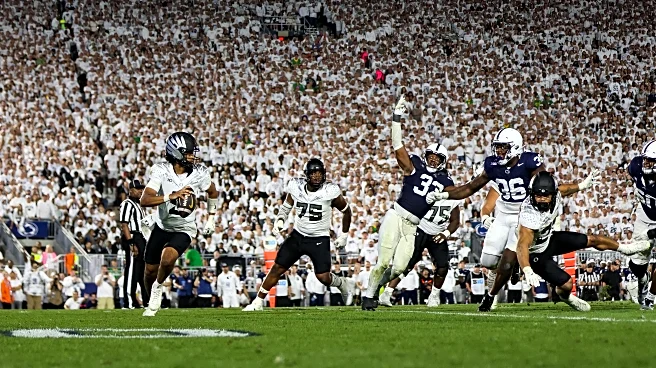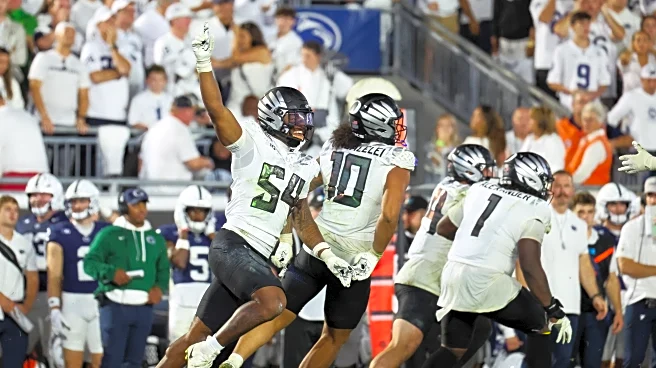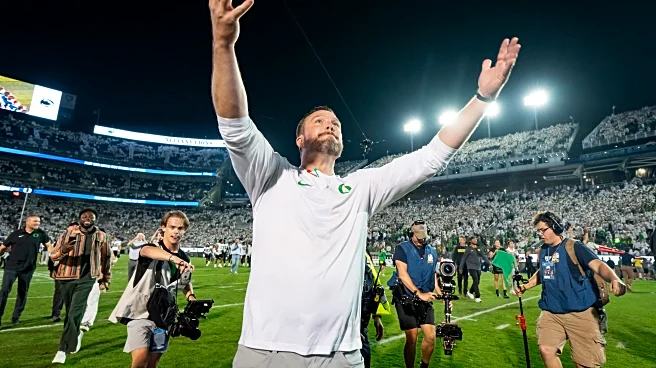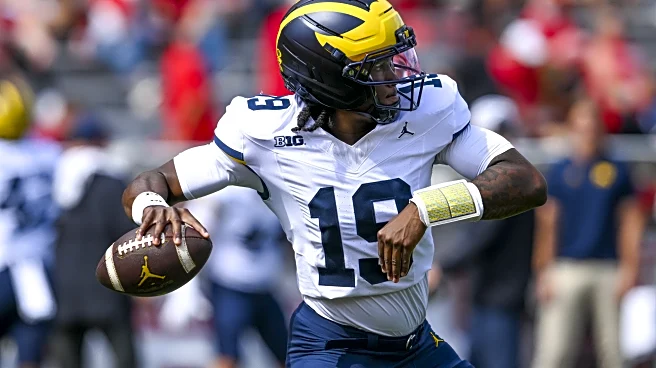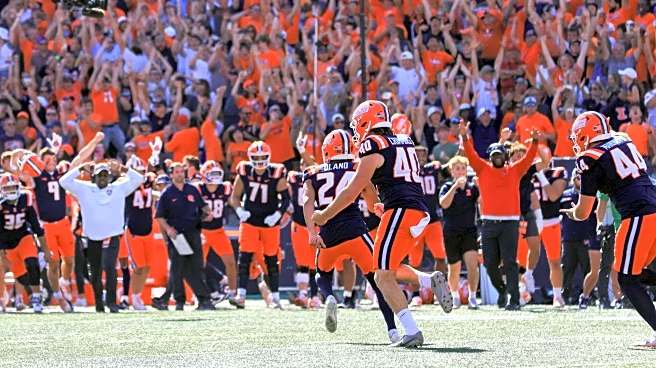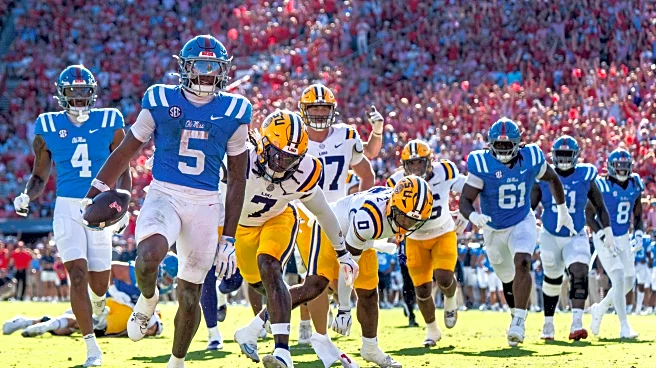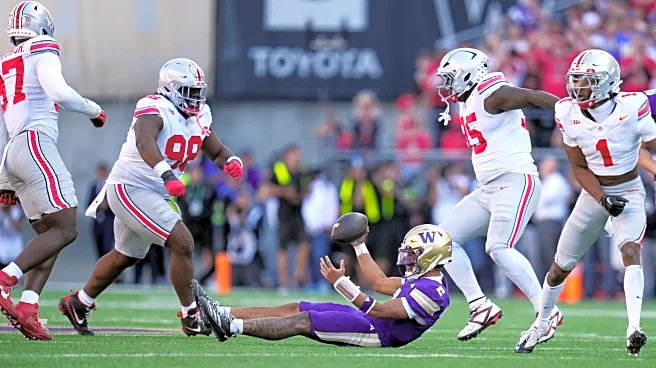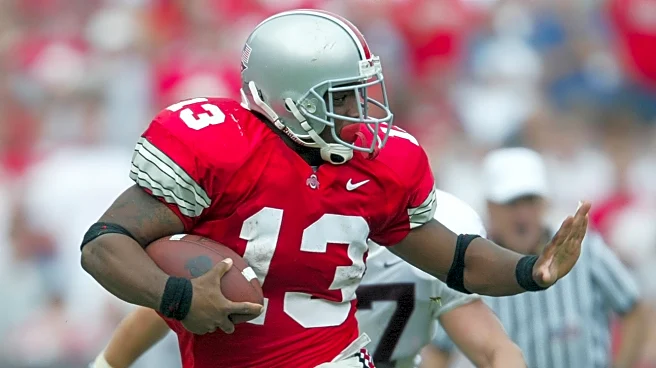What is the story about?
What's Happening?
The Big Ten Conference is in discussions to secure a $2 billion private capital investment, which would include a 10-year extension of its media rights deal through 2046. This move aims to modernize the conference's operations and ensure financial stability for its 18 member schools. The proposed investment would create a new commercial entity within the Big Ten, focusing on revenue generation from media rights, sponsorships, and other streams. The setup would divide annual distributions into 20 parts, with shares allocated to each school, the conference, and the investor. This initiative reflects a growing trend of private equity involvement in sports, as conferences seek new funding avenues to remain competitive.
Why It's Important?
This potential investment is significant as it could reshape the financial landscape of college athletics. By securing long-term media rights and financial stability, the Big Ten aims to maintain its competitive edge against other major conferences like the SEC. The influx of capital would provide immediate financial benefits to member schools, allowing them to invest in athletic and academic programs. Additionally, the move could set a precedent for other conferences to explore similar private equity partnerships, further integrating business strategies into collegiate sports. The deal underscores the increasing commercialization of college athletics and the need for innovative funding solutions.
What's Next?
The Big Ten is expected to make a decision on the private capital deal in the coming weeks. Discussions are ongoing, with the aim of achieving unanimous support from all member schools, including major brands like Ohio State and Michigan. If approved, the new entity, tentatively named Big Ten Enterprises, would begin operations, focusing on maximizing revenue generation. The conference will continue to evaluate its practices to ensure the financial stability and growth of its member institutions. The outcome of these discussions could influence other conferences to pursue similar strategies, potentially leading to a broader shift in the college sports industry.
AI Generated Content
Do you find this article useful?


